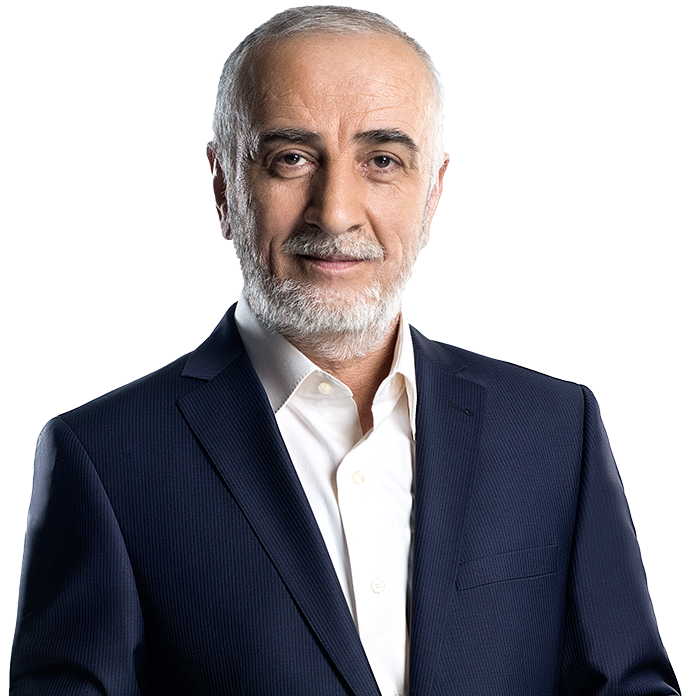
- 24.05.2025, Saturday
- 19:22
Ukraine and the Art of Strategic Traps
20:3824/02/2025, Monday
Next article
Abdullah Muradoğlu

Some strategies are inherently toxic. The goal of such strategies is to make the “target country” adopt a strategy that was actually crafted by enemy strategists. This is essentially a “strategy within a strategy” or a “hidden strategy within a strategy.” These tactics work by luring the adversary into a geopolitical illusion, trapping them at a certain point. This is what’s known as a “trap strategy,” designed to make the target country take the bait. Once they do, they become fixated on the wrong
Some strategies are inherently toxic. The goal of such strategies is to make the “target country” adopt a strategy that was actually crafted by enemy strategists. This is essentially a “strategy within a strategy” or a “hidden strategy within a strategy.” These tactics work by luring the adversary into a geopolitical illusion, trapping them at a certain point. This is what’s known as a “trap strategy,” designed to make the target country take the bait. Once they do, they become fixated on the wrong objective, a mistake that comes at a high cost for any country trying to develop a counter-military strategy.
If enemy strategists consistently emphasize the significance of a secondary issue related to the adversary, they create a perception that this issue is of critical importance. Once the adversary accepts this framing, they have effectively swallowed the bait. The next step is to make the bait even more appealing, gradually paving the way to war. And at the end of that road, the expected outcome unfolds.
Could Ukraine have been designed as a “trap strategy” for Russia? This question does not suggest that Ukraine is unimportant to Russia. Rather, it raises the possibility that Ukrainian territory might not be as vital as commonly claimed.
The American strategist who supposedly “revealed” Ukraine’s crucial importance to Russia was Zbigniew Brzezinski. Born in Poland in 1928, Brzezinski served as National Security Advisor under President Jimmy Carter. His father was a Polish diplomat, and the Brzezinski family had deep roots in the town of Brzeżany, located in western Ukraine. In 1939, they witnessed the partition of Poland—partly including western Ukraine—between Nazi Germany and the Soviet Union. As a result, Brzezinski grew up harboring deep resentment toward Russia.
Indeed, while serving as National Security Advisor, Brzezinski played a role in provoking Soviet military intervention in Afghanistan. Without going into details, his covert strategy succeeded, leading the Soviets to invade Kabul. The so-called “Afghan trap” ultimately bogged down the Soviet Union in a costly, decade-long war, contributing significantly to its eventual collapse.
In his famous 1997 book The Grand Chessboard, Brzezinski argued that Ukraine was the most important geopolitical target for post-Soviet Russia. Without Ukraine, Russia would struggle to maintain its influence in Europe. Meanwhile, from a U.S. perspective, the central strategic challenge was ensuring American dominance over Eurasia, the world’s key landmass. Ukraine, being one of the most strategic locations within Eurasia, was seen as a crucial piece in this puzzle. The power that controlled Eurasia, Brzezinski claimed, would hold a dominant position in global politics. Ironically, Russia seemed to accept Brzezinski’s framework as if he were a Russian strategist rather than an American one.
Brzezinski also advocated for NATO’s eastward expansion, believing that if the alliance reached Russia’s western borders, Moscow would lose its grip over Eurasia. In short, Ukraine was seen as a critical piece in the “American Grand Strategy.” European leaders, having outsourced their security to the U.S., eagerly followed Washington’s lead. Unaccustomed to independent strategic thinking, they didn’t even bother to scrutinize the American approach.
However, about 15 years after writing The Grand Chessboard, Brzezinski revised his views on Russia due to the “rising China threat” theory. He now saw China, rather than Russia, as America’s primary concern and suggested that Russia should be integrated into Western institutions. But by then, it was too late—NATO had already expanded to Russia’s borders, with Ukraine being the only remaining gap. Brzezinski’s shift from focusing on Russia to China also underscores the impermanence of strategic doctrines.
While wars devastate nations, they also enrich certain actors. Just consider the vast sums flowing into U.S. defense contractors due to the Ukraine war. For American strategists, Ukraine also serves as a testing ground. In this context, the “Ukraine-Russia War” appears to function as a military experiment—a war game designed to assess Russia’s military capabilities, potential, and resilience. It’s an incredibly costly game, but one that allows the U.S. to gain valuable intelligence without losing its own troops. Such war games expose an adversary’s strengths and weaknesses.
Could it be that the test is now complete, and that’s why the U.S. is charting a new course with Russia?
#Ukraine
#Grand Chessboard
#Russia
#US
#NATO
#EU
#China
LEGAL NOTICE
The BIST name and logo are protected under the "Protected Trademark Certificate" and cannot be used, quoted, or altered without permission.All rights to the information disclosed under the BIST name are entirely owned by BIST and cannot be republished. Market data is provided by iDealdata Financial Technologies Inc. BIST stock data is delayed by 15 minutes.






